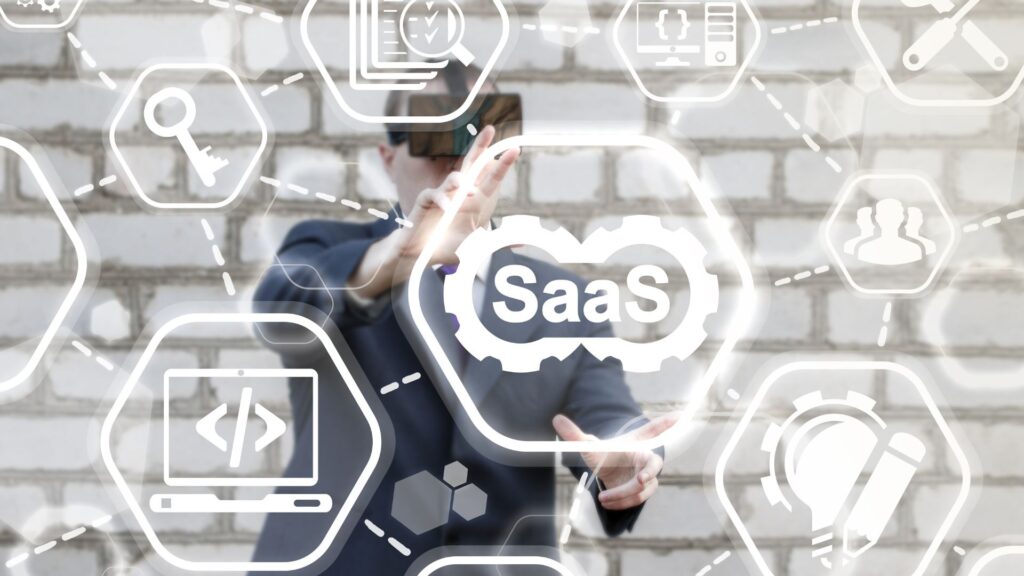
Software as a Service (SaaS) products are becoming increasingly popular in today’s digital age. With the rise of cloud computing and the internet, SaaS products offer businesses and individuals a flexible and cost-effective way to access software applications and services. However, with so many products flooding the market, it can be difficult for companies to differentiate themselves and create a sustainable competitive advantage. One potential strategy for achieving defensibility is by leveraging scale effects. In this article, we will explore the concept of scale effects and how SaaS companies can use them within their business model to build defensibility and maintain a competitive edge in the market.
What Are Scale Effects?

Scale effects refer to the advantages gained by a business or organization as it grows in size or scale. As a business grows, it can benefit from economies of scale, which are cost advantages that result from increased production or output. This means that the cost per unit of production decreases as the volume of production increases. These advantages can lead to significant cost savings for a growing company. As a company increases its production or usage, it can spread fixed costs — such as infrastructure or technology — over a larger customer base, contributing to SaaS defense. This results in a lower cost per user, which can translate into increased profitability and competitive advantages for the company. However, these types of effects can also increase the value of the product or service. With increased production, companies can offer more features, better customer service, and improved product quality at a lower price. This can make the product more attractive to potential audiences and can keep current audiences reeled in, leading to increased revenue and growth.
Scale Effects vs. Network Effects

Scale effects and network effects are often confused because they both relate to how a product’s value changes as more people adopt it. However, they require different strategies to achieve. A scale effect refers to the cost advantages that arise from increased production or usage while the definition of network effects refers to the value a product gains as more individuals adopt it.
Scaling effects have the ability to lower costs per user as more people join the platform. For example, a company may be able to negotiate better pricing with third-party providers or spread fixed costs (such as server maintenance) over a larger audience. As the company scales and grows, its profit margins may increase due to these effects. Meanwhile, defensible network effects can be seen in the increased value of the product as more people join the platform. For example, a social media platform becomes more valuable as more people join and share content within their social networks.
Why Are Scale Effects Important for SaaS Companies?

Scale effects are important for SaaS companies due to their ability to drive revenue growth and create a sustainable competitive advantage. A growing and expanding company can benefit from economies of scale which results in significant upfront cost savings and long-term defensibility. This allows the ability to invest more money into new product features, attracting new audiences and retaining existing ones. By investing in new features, SaaS businesses can continually improve the user experience, leading to increased brand loyalty and recognition.
In addition, these cost savings allow the ability to offer lower prices and exclusive features, incentivizing people to choose their product over competitors. This can lead to gaining market share and increasing revenue growth, allowing companies to expand their business and reach more people. Businesses can then increase their profitability, reinvesting those profits back into the company to further drive growth. In summary, these cost advantages are crucial to product defensibility, as they provide savings that can be invested back into the business model to drive revenue growth, create a sustainable competitive advantage, and foster loyalty.
Factors that Can Impact Scale Effects

Growing a business can be a complex and challenging process that requires careful consideration of a wide range of factors. While many factors can contribute to the success or failure of a scaling effort, there are a few key elements that are particularly critical to get right. By understanding a few factors and their potential impact, businesses can develop a more effective scale advantage and increase their chances of success through effective forms of defensibility.
Customer Acquisition Costs
Customer Acquisition Cost (CAC) is a critical metric to measure the total cost associated with acquiring a new customer. As a company grows, it may become more challenging and expensive to acquire new customers, especially as the market becomes more saturated and competition increases. This is because companies may need to invest more in marketing and advertising efforts to reach potential customers and stand out from competitors. As a result, a higher CAC can offset the savings gained from economies of scale, damaging defensibility over time.
Product Offerings and Features

Offering a wide range of features and capabilities may be more attractive to potential audiences, which can lead to faster growth and a larger audience for the platform. This, in turn, can result in greater economies of scale and cost savings for the company. Offering new and innovative product features can also help retain existing audiences and attract new ones, leading to increased revenue growth. As a company invests more in new features and capabilities, it may be able to increase its pricing or offer exclusive features, further incentivizing more people to choose its product over competitors. However, it’s worth noting that introducing new product features can also be costly. Therefore, it’s crucial to carefully consider the cost and benefits of new features, balancing their impact on user growth, revenue growth, and cost savings.
Technology Infrastructure
If a business’s technology infrastructure is outdated or insufficient, it can become a bottleneck that limits its ability to serve a larger audience. An underdeveloped tech stack could result in slow load times, frequent downtimes, or other technical issues that can impact the user experience and lead to higher churn rates. In turn, cost savings may be offset by the additional costs associated with upgrading or maintaining the technology infrastructure. To avoid these challenges, it’s important for companies to regularly evaluate their needs and promptly invest in new tech advances. They should also ensure their technology is scalable and can accommodate increased demand as the company grows.
5 Techniques for Building Defensibility Through Scale Effects

As businesses grow and mature, building strong defensibility becomes crucial for long-term success. In this section, we will explore five techniques to build defensibility. By implementing these strategies, businesses can create a moat around their operations, making it harder for competitors to enter the market and steal market share.
1. Invest in the User Experience
Companies must continue to attract and retain audiences as they scale, and user experience is a crucial factor in achieving this goal. By investing in factors such as faster load times, better customer support, and intuitive interfaces, businesses can differentiate themselves from competitors and increase retention rates. A superior experience can also lead to increased word-of-mouth referrals and positive reviews, further attracting new people to the platform. Additionally, it provides the ability to increase engagement and reduce churn rates, which can have a significant impact on the company’s revenue growth. This investment may also enable software businesses to charge a premium for their services, as people are willing to pay more for a product that is easy to use and provides a superior experience. Ultimately, a focus on user experience can lead to higher satisfaction rates, increased revenue, and a more defensible position in the market, as your audience is less likely to switch to a competitor with an inferior experience.
2. Leverage Data to Drive Growth

Scaling companies must continue to gather and analyze data to understand user behavior, preferences, and needs. By leveraging data, SaaS companies can identify areas for improvement in their product, such as underutilized or frustrating features. This can help software businesses prioritize development efforts and allocate resources more efficiently, helping to maintain and improve customer experiences. Also, analyzing this data can help identify patterns and trends that can help inform marketing and sales strategies. For example, data on demographics, preferences, and purchase history can be used to personalize marketing campaigns and improve acquisition rates. Furthermore, data can be used to optimize pricing strategies by identifying the optimal price point for different audience segments. Leveraging data can also help reduce churn and improve engagement and retention rates, as businesses can identify which individuals are at risk of churning and take proactive measures to retain them. Ultimately, leveraging data can help businesses make more informed decisions, improve the user experience, and drive growth.
3. Expand into New Markets
When a company scales, it may reach a saturation point in its current market position and face increased competition from other players. By expanding into new markets, SaaS companies can tap into new audiences, increase revenue streams, and create more growth opportunities. This can help a company diversify its revenue streams and reduce its reliance on a single market or customer segment, leading to increased stability and reduced risk. Additionally, expansion can help businesses gain access to new data sets that can be used to improve their products and make more informed decisions. This, in turn, can create additional revenue streams, reduce risk, and increase profitability through economies of scale.
4. Develop Exclusive Features

As a company scales, it must continue to innovate and differentiate itself from competitors to maintain its competitive advantage. Exclusive features can create a unique value proposition for their product, which can help incentivize current audiences and attract new ones. Developing exclusive features can reduce churn rates, as people are less likely to switch to a competitor if the product offers unique features that they cannot find elsewhere. Furthermore, these features can increase a company’s pricing power and drive engagement and satisfaction, since people may be willing to pay more for a product that offers unique features that meet their needs and provides a positive user experience. These features can increase defensibility by creating a unique value proposition, reducing churn rates, increasing pricing power, driving engagement and satisfaction, and differentiating themselves from competitors.
5. Build a User Community
By creating a community around their product, SaaS companies can create forms of network effects, where the value of the product increases as more people join. This can help drive acquisition and retention, as people are more likely to continue using a product if they feel a sense of belonging to a community of like-minded individuals. Additionally, this can help drive engagement and satisfaction. Communities can also serve as a platform to gather feedback and insights, which can be used to improve a company’s product and make more informed decisions. Furthermore, they can serve as a channel to promote new features and updates, which can help increase user adoption and drive revenue growth.
Best Practices for Measurement and Analysis

Measuring and analyzing these effects is critical to optimize growth strategies and build defensibility in markets. One best practice for measuring these effects is to track customer acquisition costs (CAC) and customer lifetime value (CLTV) over time. As a company scales, it may become more challenging and expensive to acquire new customers. By tracking CAC and CLTV within quarterly and annual reports, SaaS companies can better understand their growth and optimize their acquisition strategies to reduce CAC and increase CLTV. In addition, tracking metrics such as revenue growth, engagement, and churn rates can help businesses understand the impact of these cost advantages on their business and identify areas for improvement.
Another best practice is to conduct cohort analysis to understand how user behavior changes over time. Grouping your audience based on when they signed up for the product and analyzing their behavior over time can provide a better understanding of how the product is driving engagement and retention. Cohort analysis can help your individual company identify areas for improvement in their product and acquisition strategies. For example, if a particular cohort is showing a high rate of churn, SaaS businesses can analyze the factors contributing to it and make improvements to their product or customer acquisition strategies to reduce these rates.
Start Boosting SaaS Growth With Teknicks

Teknicks is a growth agency with a wealth of experience working with SaaS companies to drive growth and build defensibility through scale effects. Our team of experts has a deep understanding of the unique challenges facing these businesses and can help you develop and execute growth strategies that will drive revenue growth, reduce customer acquisition costs, and build loyalty. Whether you need help with the user experience design, data analysis, market expansion, or community building, we have the expertise and experience to help you achieve your growth goals. Contact us or book a free strategy meeting today to learn more about how we can help your business achieve long-term success.